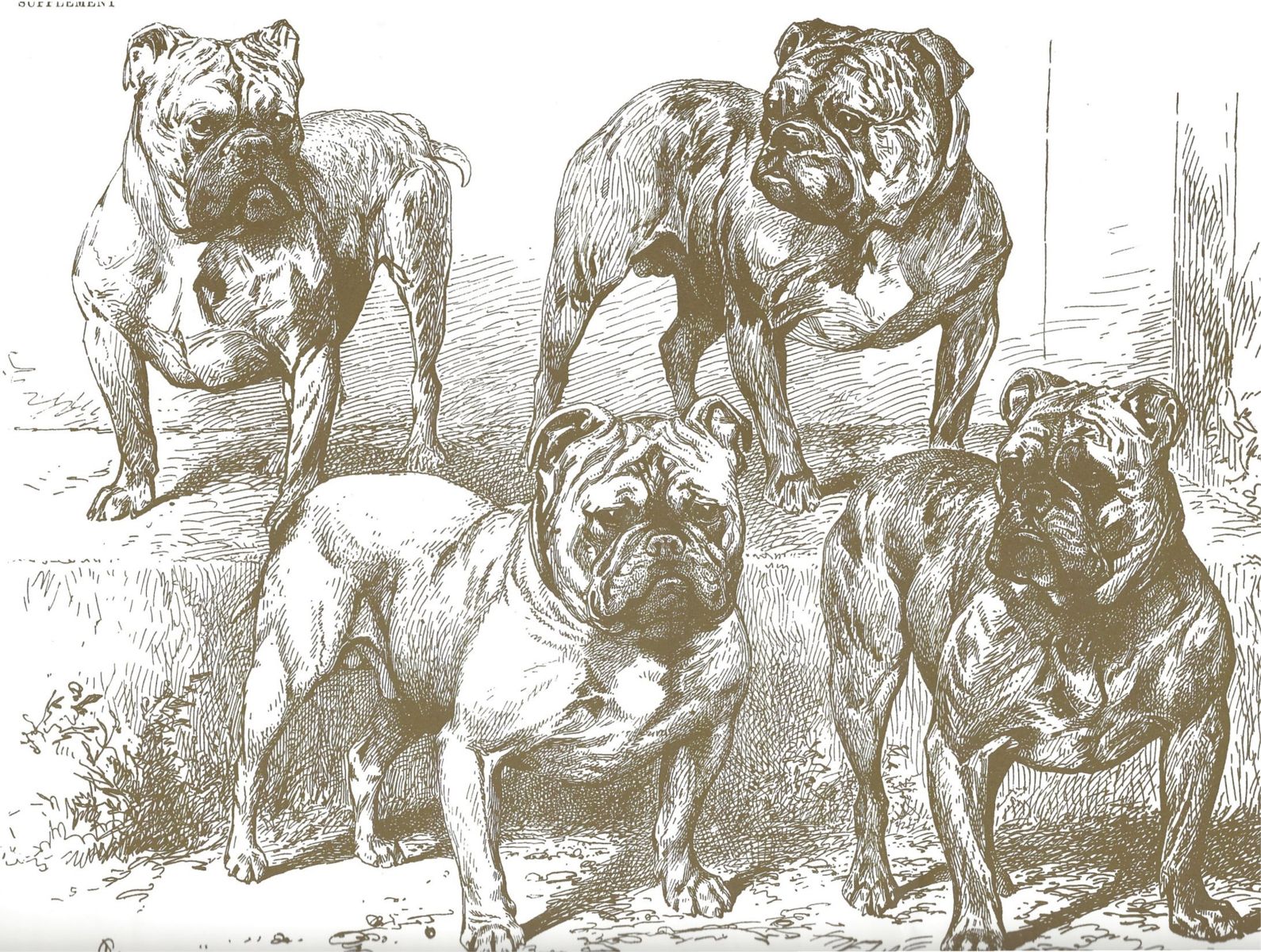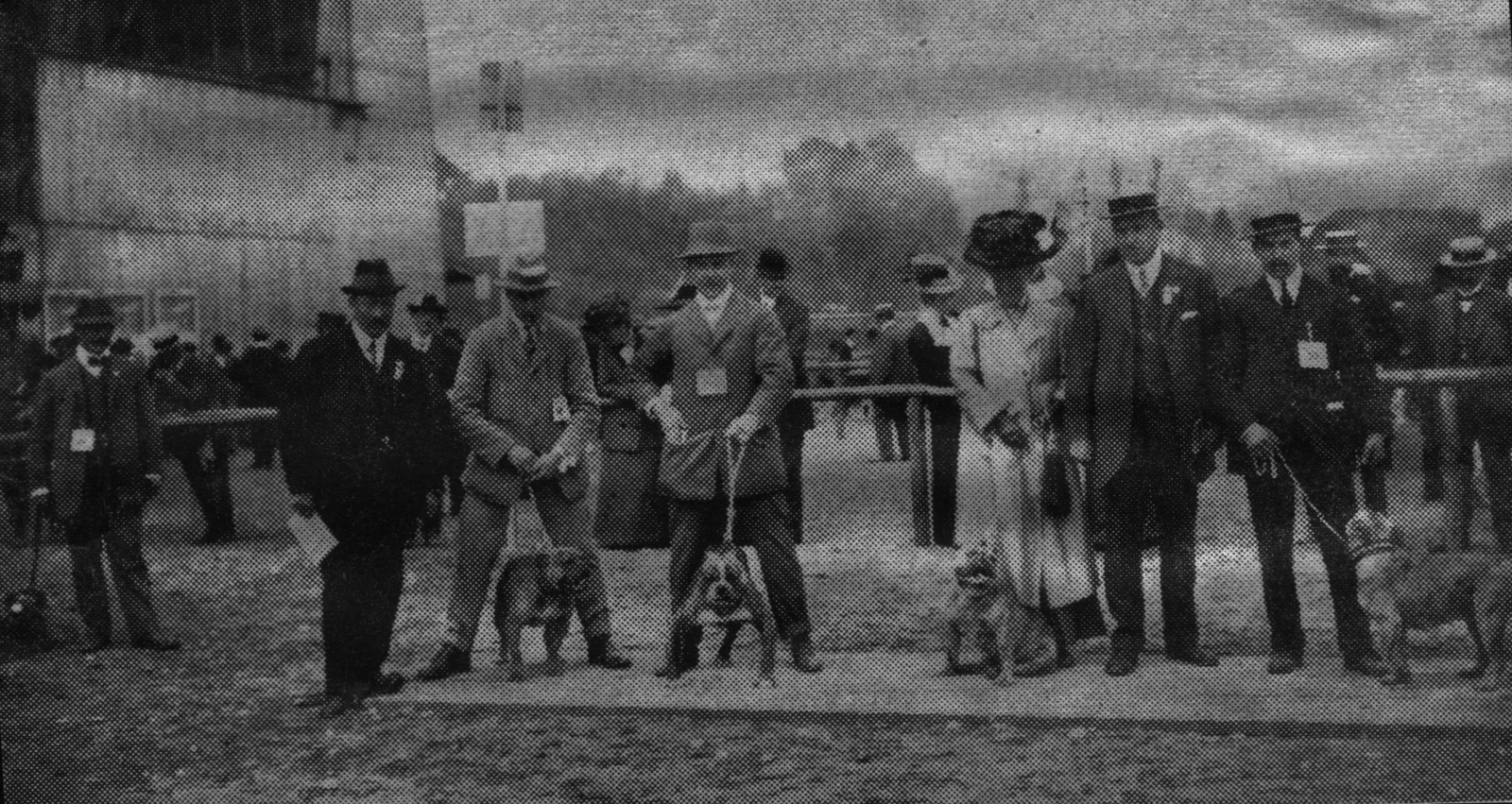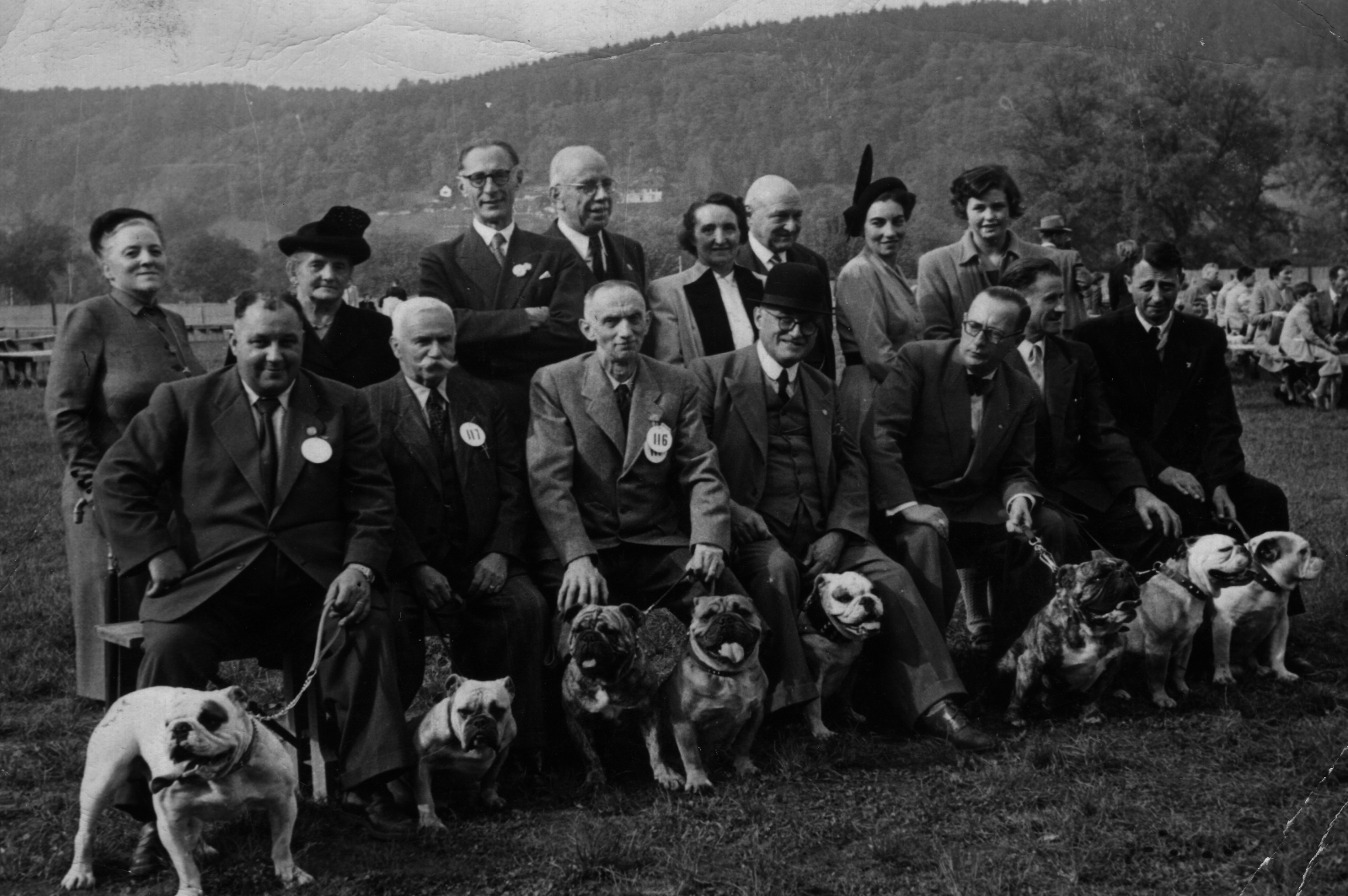The history of the English Bulldog
Dog fights and with them the ancestors of the English Bulldog were prohibited in Great Britain in 1835 and disappeared in their home country as a result. In the 18th and 19th centuries, however, many British settled overseas and took along from their home their household belongings together with their dog. Thus the major bulldog-type dogs survived in America. However, they were never recognised as a breed by all umbrella organisations.
To the present day, there are therefore only two breeds recognised by all umbrella organisations worldwide:
The English Bulldog and the French Bulldog.
Following the ban on dog fighting, a couple of experienced breeders succeeded through cross-breeding with smaller dogs in breeding from the ancestors of the dog fights a very kind, dependable and sociable dog. This was the absolute British breeding masterpiece.
With the first registration in the British pedigree registry in 1875, the English Bulldog became the first and oldest pedigree dog in the world. It has remained until today the national breed of Great Britain and enjoys great popularity in many European countries due to its ideal size of approx. 35 to 40 cm and weight of approx. 25 kg as well as its eminently dependable nature.
Until the easing of the quarantine regulations in Great Britain, importing all other bulldog-type dogs (except English and French Bulldogs) was prohibited and is to this day extremely frowned upon there. After all, who would like to turn back the clock to an inglorious past?
Today, many dogs similar to the bulldog are sold without recognition by Fédération Cynologique International (FCI) or The Kennel Club (UK) with names like
- Old English Bulldog
- Continental Bulldog
- Victorian Bulldog
- American Bulldog
- Regency Bulldogs, etc.



